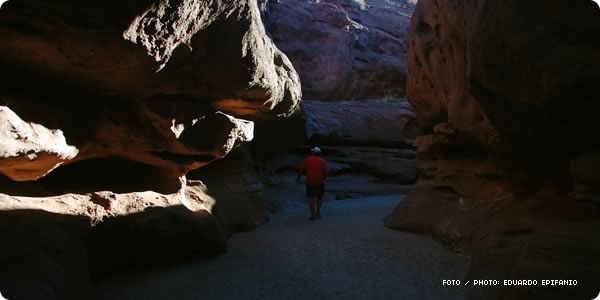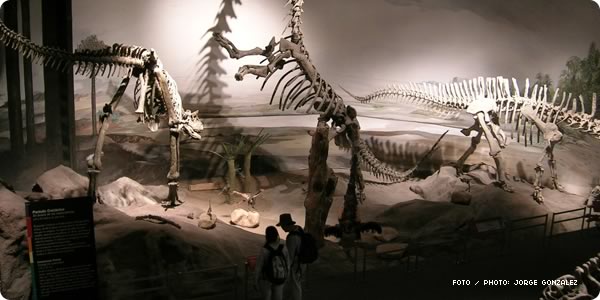Patagonia, Thursday, April 25, 2024




- Espaņol
- English
Paleontology
The earth

In 1912, after having studied vegetable fossils with identical characteristics found on the shores of South America and Africa, the German geologist and meteorologist Alfred Wegener presented his continental drift theory. He proposed that 200 million years ago, the continents were joined into one only mass of land, which he called Pangea. With the passing of time, this mass broke up into sub-continents for unknown reasons until they adopted the shape they have nowadays. Even today continents are adrift.
At the beginning, the theory was harshly criticized by the scientific community. It was not until the 1950s that Wegener's ideas gained acceptance as a result of the use of modern techniques of geological exploration, specially in the bottom of the ocean.

Wegener asserts that in the late Triassic, during the Mesozoic Era, Pangea broke up into Laurasia, made up by the present northern hemisphere, and Gondwana, made up by the southern hemisphere. Thus, the Atlantic Ocean was formed.
The weather was warmer, the seasons were not so well-defined, the sea level was higher and there was no polar ice.
It was then that the dinosaurs appeared, around 225 million years ago.
Click to play
A different map
The Mesozoic Era lasted approximately 180 million years and was divided into three periods:Triassic Period: (248 - 208 million years ago)
A supercontinent named Pangea, which means “all lands”.
Jurassic Period: (208-146 million years ago)
Pangea breaks up into Laurasia and Gondwana.
Cretaceous Period: (146-65 million years ago)
The continental drift continues at great speed at the same time that volcanic activity increases. The continents have almost the same they have nowadays.
Inter Patagonia - Information on paleontology and dinosaurs in Patagonia
© InterPatagonia 2002-2024 Total or partial reproduction forbidden. Derechos de Autor 675245 Ley 11723
© InterPatagonia 2002-2024 Total or partial reproduction forbidden. Derechos de Autor 675245 Ley 11723